
2010 began with 3D fire. The 3D movie Avatar is sweeping 2D movies with a boom, and many fans were awaiting the next 3D movie such as Alice in Wonderland. This was the era where 3D that has proven to be the focal point of Hollywood. Korea launched 3D television programs in 2010 and the industries also geared up for the 3D Era including areas such as medical, advertisement, and construction.
It was predicted that soon 3D advertisements will soon conquer the air, and museums envision exhibits in 3D. Cyber construction engineering and management is already happening. By constructing a building in virtual space, it will result in a more accurate and satisfying experience than ever before. 3D endoscope, and 3D Computed Tomography is on way into the medical field for better patient care; all of this was the beginning of the 3D movement.
"When 3D technology tops the previous business or traditional industry, it becomes a whole new industry. This is the 3D convergence industry or business," defined by President Kim Eun-soo of KICS.
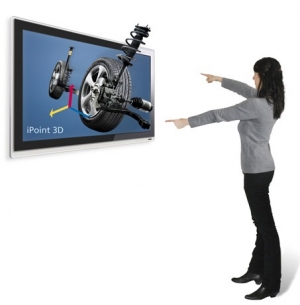
Creation of a new higher-value added industry was the 3D Convergence. At the '3D Convergence 2010' Forum on February 11, 3D masters from industries, institutes, and research centers gathered together at the Seoul Press Center. At the forum there were many subjects to discuss such as "how to develop and expand the 3D convergence industry"
It was an urgent matter to set a strategy to compete in the global 3D content market. Since 3D movies and broadcasting content were in the hot zone, a spotlight went to the promotion of business. 2010's 3D technology could also bring a revolution to the performing arts industry. In theater art, virtual performance can be given in the open air by recording the previous play. The high image quality makes the characters look like real characters performing on the stage. The problem here, once again, is not how to apply 3D technology into the traditional industries, but how Korea is going to be noted as the top competitor in the global market.
Core Technology
The '3D Convergence 2010' forum was a big party of 3D researchers. This means that the forum heavily discussed the subject of core technology. The questions still remain: How will we develop core technology and process patents How to expand it further to an international standardization
Hologram
2010's 3D technology is the sparrow type, which hurts the viewer if seen for a long period of time. The only solution to this problem is the hologram. Korea is still in the process of developing hologram technology. Hologram TV and technology will soon be commercialized. The forum discussed dividing roles in order to dominate the future 3D market by advancing with the next generation technology.
Safety Guidelines
'3D Convergence 2010' Forum emphasized the necessity of safety guidelines. For instance it mentioned: how to prevent dizziness for viewers; how to accommodate viewers with less stress; along with other safety guidelines.
Evaluation and Verification
It is obvious that more 3D content will shower the movie and broadcasting industry, but where are the standards for broadcasting equipment Evaluation, verification standards and even a certification process was discussed at the forum.
From IT Strength Country to 3D Strength Country
Korea's strength lies in IT and the highly competitive display technology. The 3D Era made its way here in 2010 and the best government policy was needed. Many voices suggested ideas to penetrate the 3D global market." Just like a World EXPO, some annual events like a 3D Festival will be ideal," added President Kim Eun-soo of KICS.
The 66th UN ESCAP arrives in Songdo

On May 13, 2010, the 66th UN ESCAP was held in Songdo, Incheon to address the "achievements of MDGs: promote a stable and supportive financial system and green growth or environmentally sustainable economic growth through technology and financing."
This was Korea's second time to hold this meeting since the 47th UN ESCAP in Seoul in 1991. This time about 300 delegates from 62 member nations; 100 representatives of NGOs; and around 200 people from international organizations attended the conference. The ESCAP conference started with a welcoming address by Korea's Prime Minster, Chung Un-chan on May 17.
UN ESCAP: Millennium Development Goals
One of the valuable contributions UN ESCAP was making towards the Millennium Development Goals (MDGs), UN declared in 2000 that it has been trying to reduce extreme poverty in the Asia-Pacific region.
For successful achievement of MDGs by 2015, financial subsidies from countries sense of strong political will and leadership are required. Therefore, Korea who was contributing to MDGs was willing to give more hands on assistance to the 66th UN ESCAP in Songdo.
'Galaxy S' or 'iPhone 4' Which One Is Smarter
On June 7, Steve Jobs proudly presented his newest creation at WWDC 2010 (Apple's Worldwide Developers Conference 2010). We can assume that Samsung is one who observed Steve's presentation the most closely and not simple for the reason that Samsung supplied many parts for the iPhone 4. In competition with Apple, Samsung announced their brand new product, Galaxy S, needless to say, created a fierce competitive race. Yet, the question still remains: which one is smarter Here are the comparisons between Galaxy S and iPhone 4.
"The biggest leap in iPhone history," iPhone 4
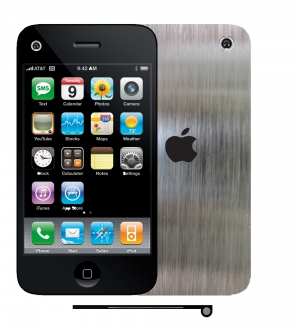
Since, Steve Jobs described his new creation as "The biggest leap in iPhone history." I wonder how many technical innovations have been made from iPhone 3G Well, let's start with the look. The new iPhone is not round and cute, but it sure looks sleek and chic.
iPhone 4 became 24 percent slimmer than the previous model and contains scratch-proof optical glass and a stainless steel band around its edge which acts like an antenna. This modification is to prevent disruptions in reception. Also, it has volume controls on the side of the phone along with an accessible microSIM tray. Considering battery life, the iPhone 4 is less than Galaxy S which has up to seven hours of talk time. Apple claimed it has the longest, but supposedly Galaxy S has 7.8 hours of talk.
As for the long hours of talk, users can enjoy Apple's Face video calling service with a dual camera of 5 megapixels. However, it only works between iPhone 4 users and is only be operable particularly in Wi-Fi areas.
According to Steve Jobs, the camera increases the amount of light captured by the sensor and results in better photographs even in low-light situations. Plus, HD video is recordable at 720p. In addition it takes 30 frames per second which are editable. The functions include: ablility to set to music; cut and even send photos.
The iPhone 4 has a small display, 3.5-inch LED, in comparison to the Android phones but the quality of the screen is greater with 340X640 pixel resolution. It can be assumed that there is one thing that has certainly been upgraded. It runs on the iOS 4.0 or OS 4.0 while Galaxy has Android 2.1.
The strongest features of all, iPhone 4 is excellent at downloading all 200 thousand applications. Users can enjoy multiple functions at once without going in and out of applications. In terms of cost, iPhone 4 G is the basic $199 model coming with 16GB of built-in storage. The colors were black and white when it hit market on June 24 in the U.S.
"Masterpiece of smart phones," Galaxy S
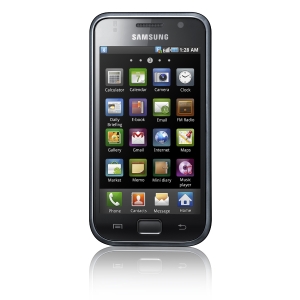
Samsung proudly introduced Galaxy S to compete with iPhone 4. First, "the masterpiece of Smartphone" as Samsung calls it, looks more than the iPhone 4 because there is nothing really differentiating about its look: 4-inch super AMOLED screen, 1GHz processor and advanced location-based service. How about the functions then It runs on the Android 2.1 operation system and soon the Android 2.2 operating system will be available to upgrade. It weights at only 121 grams which is lighter than iPhone 4, at 137g. The battery is removable unlike the built-in battery of iPhone 4 and lasts longer during stand by time, 490 hours (iPhone's stand by time is 300 hours).
The 5 mega pixel camera is the same as iPhone 4 and measures at 64.2X122.4X9.9mm; it has HD video playback and recording. In addition it has great codec support and is capable of playing MP3, WAV, eAAC+, AC3 and FLAC audio files along with MP4, DivX, WMV, H.264 and H.263 video files as well as having WiFi 802.11b/g/n connectivity. The camera application has all the attractive features including autofocus, geo-tagging, touch focus and face and smile detection. However, it has only 57,000 applications which is certainly the weak area Samsung needs to improve in order to compete with iPhone. Still, the Android OS integrates Google apps such as e-mail, SMS and MMS are supported. The phone can view and edit documents in Microsoft Office 2007. Thus, a social Hub feature offers quick access to social-networking.
Samsung announced that they are going to release Galaxy S in 110 nations over the world at the same time. This shows the great confidence of Samsung as well as the company's ambition to rule the world of Smartphone. Samsung planned to lead the popularization of Smartphone regardless of the price or lifestyle of the region. Samsung made contracts with major telecommunication companies from 110 countries and quickly acquired one million pre-orders in 2010.
iPhone 4 and Galaxy S are definitely the Smartphones to continue watching as it seems both have great functions.
Samsung Galaxy Tab or Apple iPad
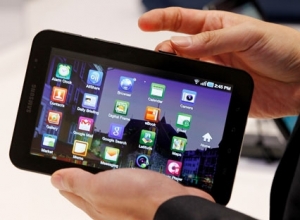
Many experience the same dilemma when trying to update their latest gadget fix. Since the introduction of the Samsung Galaxy Tab earlier, the options for slick, thin, and highly portable computing devices has grown passed just the Apple iPad. However, there are distinct differences between these two that could greatly impact user experience. It is not as simple as a change in memory capacity or applications.
First, the most obvious difference is size. The iPad and the Galaxy Tab vary in weight and display size from each other. The Galaxy Tab is slightly smaller than the iPad; the Tab has a mere 7 inch display screen and the iPad is a whopping 10. If looking for a system that is on-the-go and small enough to fit into your pocket, the Samsung's Galaxy Tab is the obvious pick. Although, a larger display would be preferred by those who watch movies, do work, etc., so the iPad would be the best pick in this respect.
For picture and video-creating lovers, there is no question that the Galaxy Tab is the right choice. Equipped with two cameras, facing forward and backward, the user is able to engage in video chatting and take pictures using either of the cameras. Unfortunately, the iPad is not equipped with a camera, so for those who need one, the Galaxy Tab is a must.
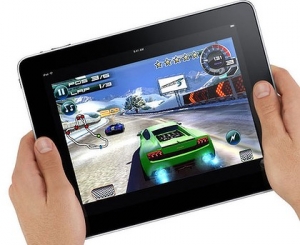
Ever have the urge to multi-task The Galaxy Tab gives the user the ability to run multiple programs simultaneously with its Android operating system that gives access to large amount of apps. However, it is rumored that this significantly slows down the speed. Right now, the iPad is not capable of this, but Apple has promised to upgrade its product's software to accommodate its users' demands. Although the Galaxy Tab has this ability, most technology lovers enjoy the software on the iPad more.
The competition between Samsung and Apple is high; the availability of features and the reduction in price will be the result of newer versions taking the stage. As of now, this is what the products look as of 2010.
Korea ranks in the top spots of the UN's e-government survey

Korea has been making efforts in building a wide range of information and communication infrastructure to make a strong e-govenment system; those efforts are recognized worldwide as Korea ranks in one of the top spots of the UN's e-government survey in June of 2010.
Samsung and LG Firing Up the 3D TV Market
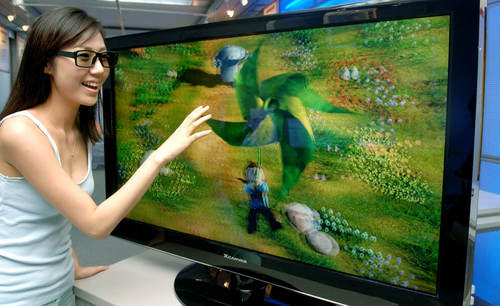
Samsung Electronics seemed to be one step ahead of LG Electronics in the 3D TV market as it released its latest 3D TV sooner than LG.
On Feb. 25 and 26, Samsung began a road show for its new 3D TV at major department stores and preordering started for its 46-inch and 55-inch 3D TV models on amazon.com early that month. The projected cost for the 46-inch model was US$3,100 and US$4,500 for the 55-inch.
An Samsung official said, "There will be a growing demand for 3D TVs starting from next year. First, we will release 3D TVs domestically then expand to Europe and U.S. markets. Our goal is set at US$2 million in sales." On top of that, the first introduced 3D LED TV 7000, 8000 and 9000 series, which have 3D Hyperial Engine installed, realized high-definition and razor-sharp pictures.
LG Electronics also introduced its shutter glass model the LX9500 series in mid-2010. This is a 47-inch 3D LED TV and the 55-inch model. An LG representative said, "Our 47-inch model is about US$600 cheaper than Samsung's 46-inch model. This means we try to appeal to consumers with price competitiveness." The 47-inch sold for US$2,500.
LED, AMOLED and LCD Were Way Too Popular
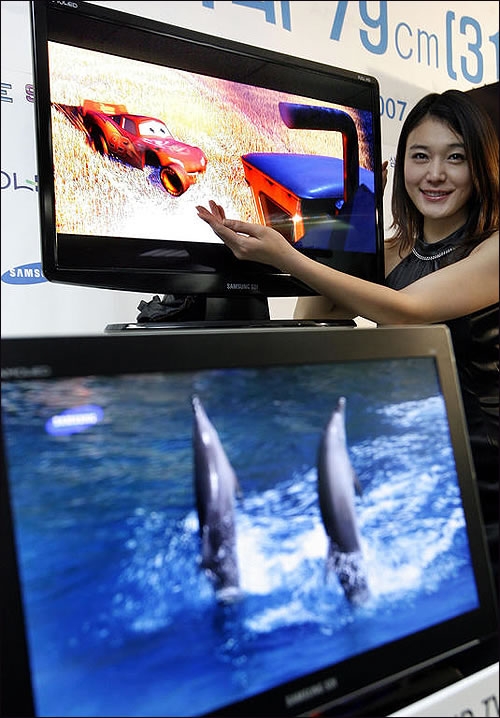
It has been hectic for the Semiconductor and Display industry because the demand for LED, AMOLED, and LCD was high. The activity was caused by the demand for Smartphones so 3DTVs stepped up sharply, not only in the domestic market but also in the world market; LED, AMOLED (Active-matrix organic light-emitting diode) and LCD was the main parts for the gadgets.
AMOLED, known as the next display, was used in the Galaxy S by Samsung. This Smartphone reached two hundred thousand in sales. In addition, Apple's iPhone 4 used materials in the CPU, the heart of a mobile phone, by Samsung and LCD panels from LG Display.
However, the industry could not avoid short supply. Even though they work night and day, they could not keep up with the orders and they continued to make every effort to match the ordering quantity.
The Great 20 Meets in Korea
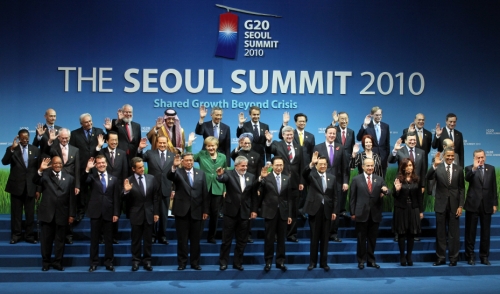
Ceremonial photo session on the occasion of G20 Seoul Summit

Korea welcomed the G20 participants with rich culture. The world leaders were introduced to Korean food, traditional dance, traditional costumes, and high-technology exhibitions at the G20 and dinner meetings.

C&C20 held an opening ceremony in Seoul Square a day before the G20 meeting to introduce Korean traditional music and traditional dress, Hanbok.
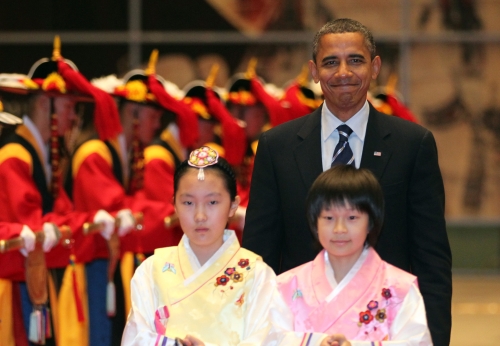
Mr. Obama enters the G-20 Dinner on November 11 with the escorts in traditional Korean dress.
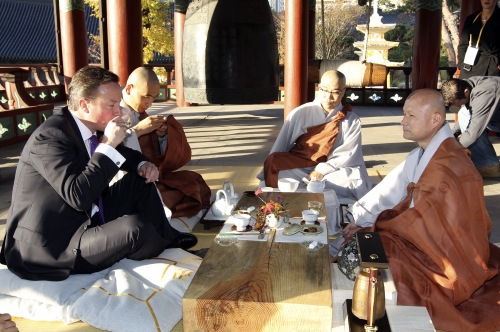
British Prime Minister David Cameron made a short visit to Bongeun Temple. He had a tea time with Venerable Jinhwa, head of South Korea's millennium-old Bongeun Temple, on Nov. 12.
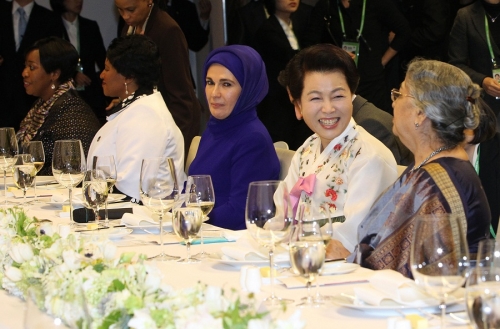
The First Lady Kim Yoon-Ok, the wife of President Lee Myung-Bak, hosted the spouses accompanying the G20 leaders and heads of IOs at a banquet in the Leeum Museum, located in Yongsan, on November 11 from 19:20-21:10. The spouses dined at the Leeum while the heads of state attended the working banquet at the National Museum. Following the banquet, Kim Yoon-ok presented a book of Korean recipes she compiled as chairperson of the "Organization for the Globalization of Korean Food" to each of the spouses.
World famous pianist Baek Gun-Woo welcomed the spouses with a beautiful piano melody that matched the mood of late autumn. During the banquet, the spouses listened to well-known compositions from participating nations. Western dishes were prepared for the banquet, bearing in mind the significance of the day and the harmony of the venue. The spouses were offered a choice of meat, fish and vegetarian dishes; for example, Korean beef tenderloin, pan-seared red mullet, and organic Tofu. The First Lady personally selected the banquet menu after consulting with culinary experts and attending tastings.
13 spouses attended the banquet including the first ladies of Mexico, South Africa, Turkey, India, Canada, the EU, Malawi, Ethiopia, Singapore, and Vietnam, as well as the spouses of the UN and OECD heads.
Samsung Electronics' Leader Changes
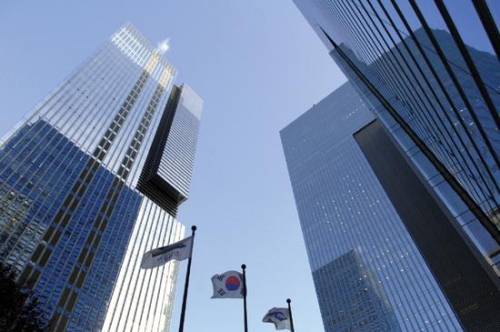
On December 3, Samsung announced the promotion of a new president, Lee Jae-yong who is expected to strengthen strategic relationships with major customers around the world. Seemingly a family advancement, Lee Jae-yong’s sister Lee Boo-jin was also named the president of Samsung Everland Inc. in addition to CEO of Hotel Shilla. The previous president and chief executive officer of Samsung Electronics, Choi Gee-sung, advanced along with these two after being declared Vice Chairman of the company.
This group of new and young leaders is expected to change Samsung for the better by focusing on the long-term track of the company as we move forward to coming years. The general public appears to have a positive feeling as the stock shares rose 2 percent right after the announced leader change. Samsung, a mega business coonglomerate, is exhibiting promise by the change to young, fresh minds and taking steps to establish a clear future plan full of confidence.
Cloud Computing still tops the 2011 priority list
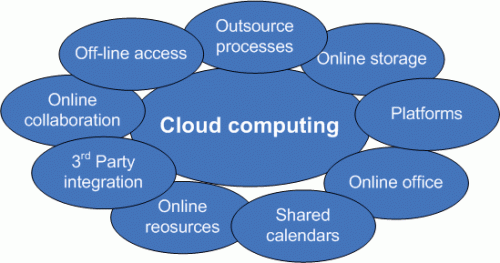
Society entered a new era in computing where software running on a user's PC and IT system was increasingly complemented by applications and services accessed over the Internet from remote data centers; in other words, the cloud. The rapid growth of cloud computing created tremendous opportunities for governments, businesses and individual users alike. Cloud computing still has the potential to enhance the efficiency, productivity and competitiveness of businesses in the global marketplace; provide access to better and more affordable healthcare; and also facilitate the dissemination of state-of-the-art educational tools.
Especially for Asian markets, cloud computing gained higher value as it accelerated the overall transition to an innovation-based economy with sustainable job growth and higher wages along with the standards of living for 2011.


